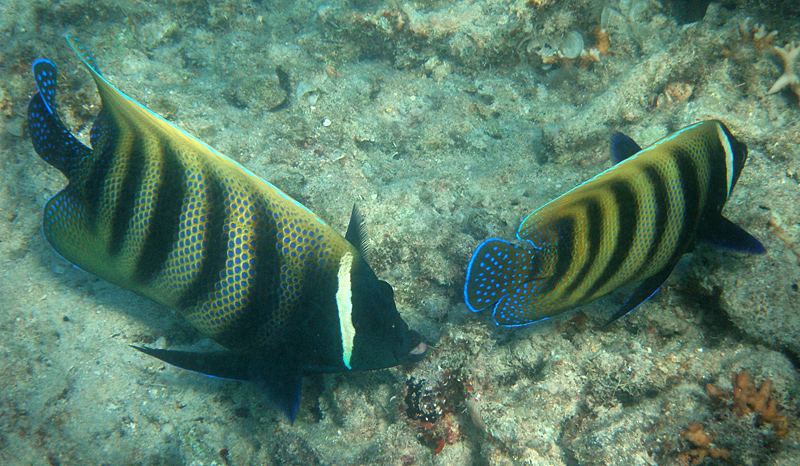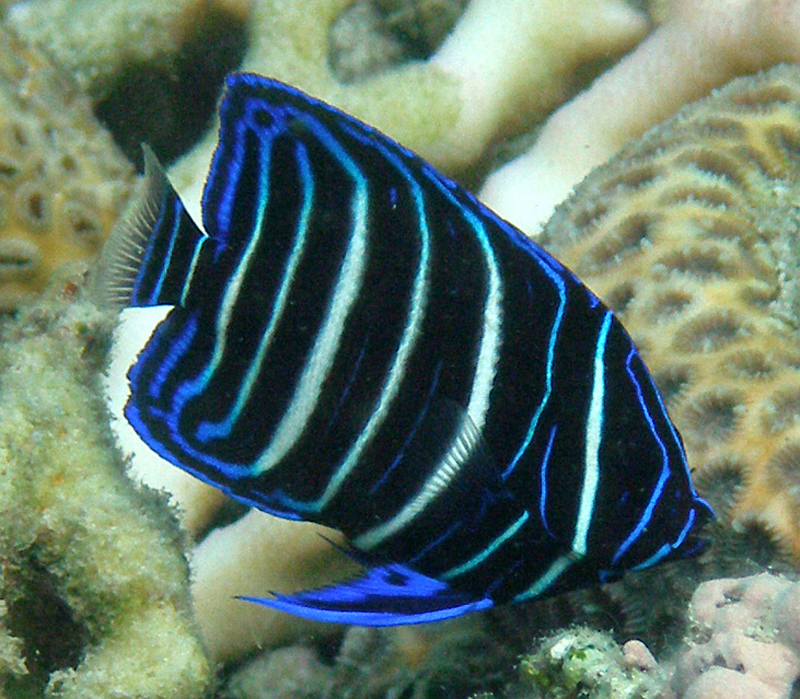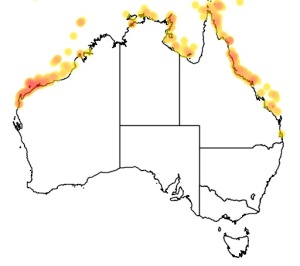Colours
Distinguishing features
A large fish with a laterally compressed body. It has a black head and a distinct white vertical bar behind the eye, and six pale vertical bars on the side of the body. Each scale has an electric blue highlight, and blue spots also cover the tail and rear parts of the dorsal and anal fins. The juvenile has a dark body and a distinct pattern of blue and white lines.
Size
- Up to 46 cm (Standard length)
Depth range
- Depth range data is not yet available.
Synonyms
Distribution
Distribution and habitat preferences
Areas of rich coral growth in sheltered lagoonal and backreef habitats.
Found in most locations around the Island.
Local abundance
- Lizard Island: Commonly seen
Behaviour
The Six-banded Angelfish is the most abundant Angelfish around Lizard Island and can be seen in locations, although it prefers sheltered sites more than reef fronts and crests. It is a spectacularly coloured fish, especially when seen in shallow water and full sunlight, when the electric blue spots on the body are very prominent. It is quite wary, but if approached slowly it will usually allow a decent view, especially in areas like Watsons Bay and Mermaid Cove where the fish regularly see divers. If the fish are scared they can emit a deep burst of sound, "brrt" from their swim bladder, which is quite loud underwater. They feed on a mixture of benthic invertebrates, anemones, sponges, and algae. The juveniles are quite differently coloured from the adults, and are very shy, usually hanging around the entrance to caves and crevices into which they disappear as soon as they see an observer. This species is also likely to be a protogynous hermaphrodite, although the adults are usually seen in pairs rather than harems. There is little published information on the spawning of the larger members of this genus.
Web resources
References
- Bellwood, D.R., S. Klanten, P.F. Cowman, M.S. Pratchett, N. Konow and L. van Herwerden (2009). Evolutionary history of the butterflyfishes (f: Chaetodontidae) and the rise of coral feeding fishes, Journal of Evolutionary Biology, doi 10.1111: j1420-9101200901904x. LIRS catalog number 1348.
- Bellwood, D.R., L. van Herwerden and N. Konow (2004). Evolution and biogeography of marine angelfishes (Pisces: Pomacanthidae), Molecular Phylogenetics and Evolution, 33: 140-155. LIRS catalog number 873.
- Bostrom-Einarsson, L., M.C. Bonin, S. Moon and (2018). Environmental impact monitoring of household vinegar-injections to cull crown-of-thorns starfish, Acanthaster spp. Ocean and Coastal Management, 155: 83-89. LIRS catalog number 2202.
- View all references






